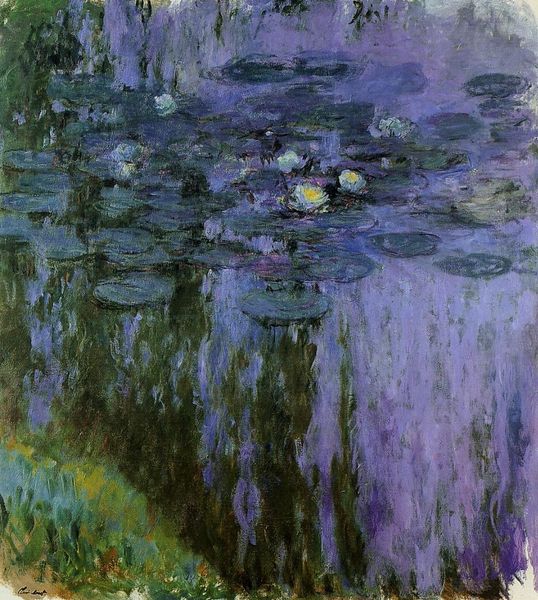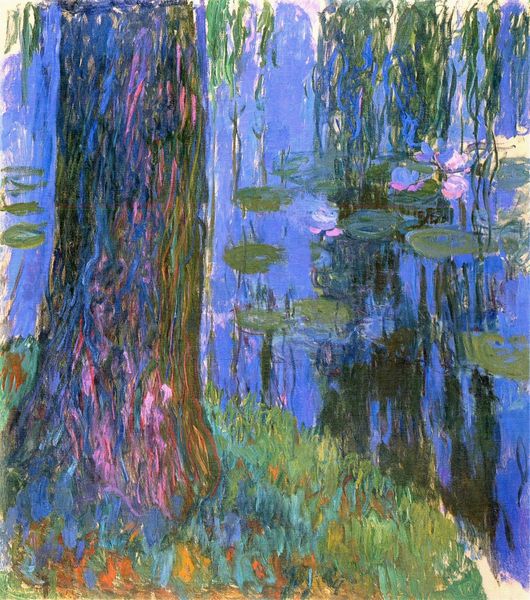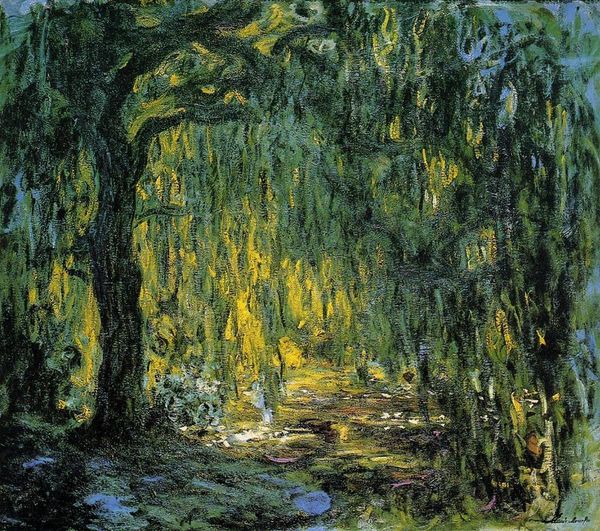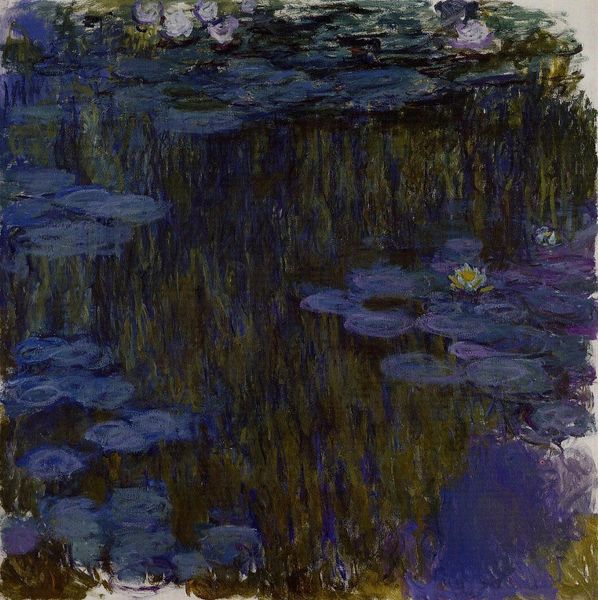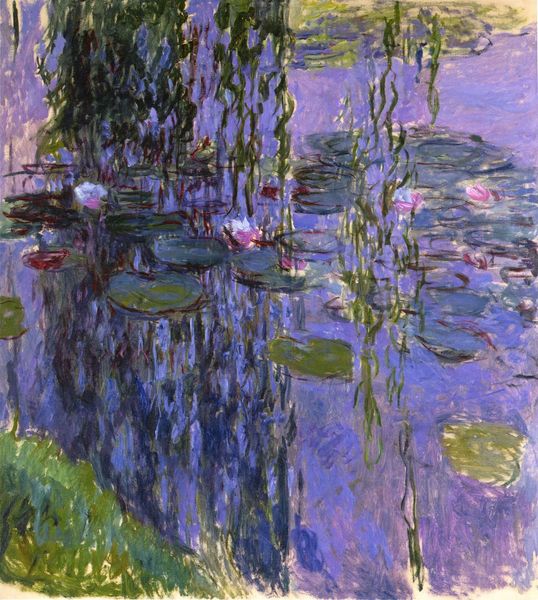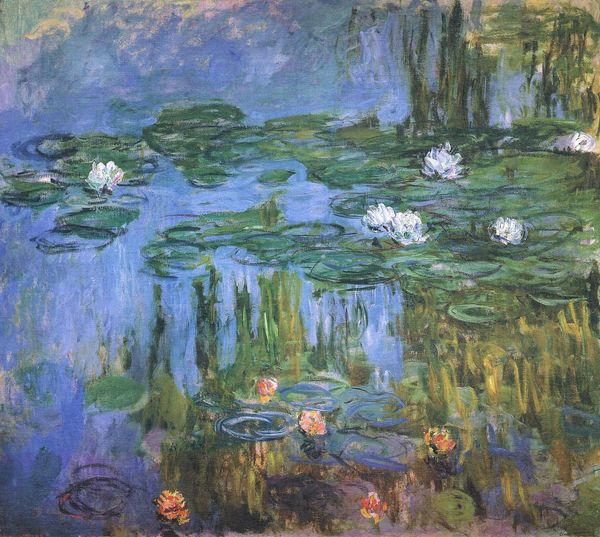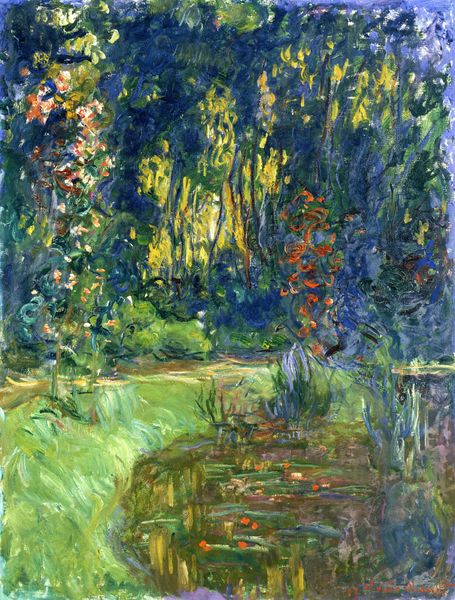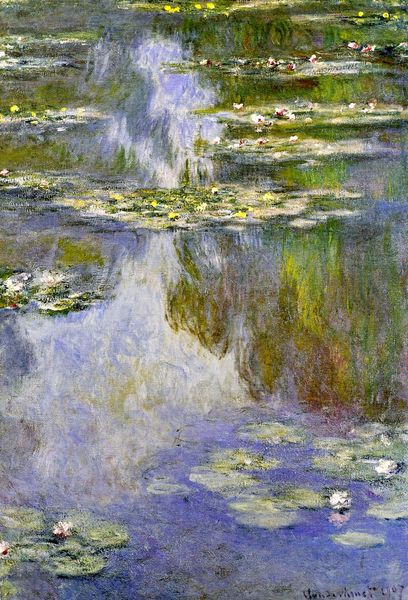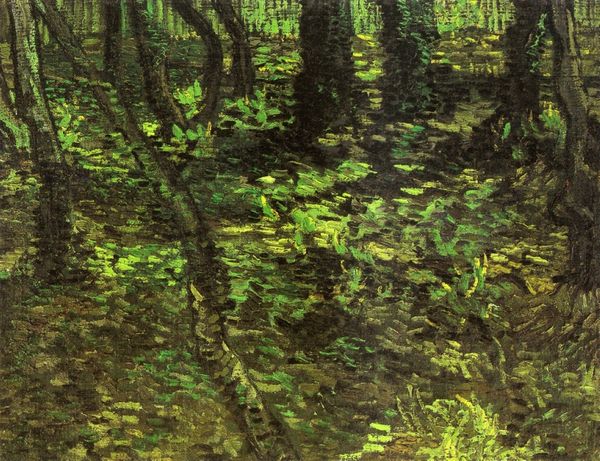
Copyright: Public domain
Curator: Good morning. We’re standing before Claude Monet’s “Weeping Willow and Water-Lily Pond,” painted in 1919. Editor: Immediately, I feel enveloped, almost submerged. The cascade of green pulls me in. It’s a curtain, heavy with a strange sort of serenity. Curator: It's an immersive painting, wouldn't you say? The composition relies heavily on vertical lines created by the willow’s drooping branches, balanced against the horizontal plane of the water and lily pads. Look closely at how Monet uses complementary colors – subtle hints of red amidst the dominant greens. Editor: Yes, there’s a push and pull between decay and vitality. Monet seems fixated on the formal properties: color relationships, surface textures, light interacting with matter, as his sight dimmed. It seems elegiac... a little hopeless. Curator: I read it differently. Knowing this was painted toward the end of his life, I sense a quiet acceptance, a surrender. The water, reflecting the sky, could symbolize a transition, a passage. He returns to the same location—his gardens at Giverny—obsessively. Editor: Obsession, sure, but is it born of comfort or desperation? Think about how the close cropping deprives us of context, pushing the composition towards abstraction. Is he capturing the essence of nature or nature slowly dissolving around him? Curator: Perhaps both. He’s definitely pushing the boundaries of perception. Those strokes of paint seem almost violent, then become calm like a peaceful lake. Editor: I agree, there's an inherent ambivalence about how "present" something like weeping foliage can even be in that style, and how Monet interprets this reality into new meaning on the canvas. In conclusion, it’s less of a depiction of water lilies and more of an exploration into ephemerality. Curator: Beautifully put. It’s a space for contemplation, urging us to see beyond the surface, finding our reflections in the dance between light, color, and form.
Comments
No comments
Be the first to comment and join the conversation on the ultimate creative platform.
